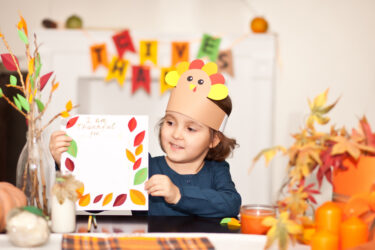It’s easy to grab a bag of chips (saturated fat!) or a handful of cookies (carbs!) but you can take control of what you feed your kids and improve their eating habits – and yours!
All summer long, if the kids are at home, it seems like they’re poking around the refrigerator and pantry nonstop. Potato chips and cookies are favorites for many, but how do you get your kids to reach for healthy snacks?
Nutritious snacks are a challenge for most of us because the not-so-nutritious snacks are so prevalent everywhere. Not to mention that if you try to instill good eating habits at home, your efforts are easily sabotaged by a well-intentioned friend or a quick stop for fast food.
Still, even a little bit of effort on your part at home will benefit your family by passing on the message that what we put into our bodies is important for good health and to feel our best. Keep ready-to-eat, healthy and fun treats within reach and you’ll be on your way to encouraging good eating habits and healthy snack decisions.
Have Snacks on Hand
“Good nutrition is important for the learning process and cognitive development,” says Kim Kirchherr, a registered dietician. “And, with the variety of healthy, fun products available today, it can actually be easier to get kids to eat right.”
When kids go searching for a snack, make sure that what they find is good for them, and teach them how to make snacks for themselves. Reward efforts to clean up afterward. Kirchherr says you should also premake snacks you want them to have and store them on a designated shelf in your refrigerator or an easy-to-reach shelf in your pantry or cupboard. Here are a few easy snack ideas your kids will love:
- Popcorn Pizzazz – As a healthy alternative to potato chips, pop some popcorn and sprinkle with parmesan cheese. Popcorn is low in fat and calories (purchase the ones without butter or “lite butter,”) but high in carbohydrates, providing your kids with the energy they need for play and study. Show kids how to use your microwave, where to get the bowl you want them to use and where to store the parmesan when they’re done.
- Want S’More? – Try this fun twist on a favorite childhood treat: Spread low-fat vanilla yogurt on graham crackers, add a few mini-chocolate chips and strawberry slices, then sandwich together.
- Smooth Move – A low-fat yogurt smoothie or yogurt tube is a fun and tasty snack, and a great source of calcium. Kids can make one for themselves if old enough, but your expectations for clean-up!
Snacks to Ease Your Mind
“Nutritious snacks not only ease parents’ concerns, but teach children to make healthy food choices independently,” says cooking consultant Carol Fenster, Ph.D. “Their palates quickly adjust to these nutritious foods, setting up healthy eating patterns for life.”
Instead of cookies, candy, ice cream or chips and dip, provide raw baby carrots or celery sticks dipped in hummus, pesto or lowfat ranch dressing. Raw broccoli or cauliflower taste great dipped in salad dressing. To wean kids from the fattiest of chips, start purchasing baked ones instead, and provide salsa for dipping rather than the fatty sour cream-based dips, suggests Fenster.
Don’t Forget Fruit / Great ideas for fruitful snacks include:
- Sliced apples or pears with peanut butter
- Pierced whole bananas, dipped in honey or chocolate syrup, and rolled in shredded coconut or shelled sunflower seeds, then frozen
- Frozen, seedless grapes or fresh blueberries
- Make your own trail mix with dried fruits, pumpkin seeds and maybe even a few pieces of your child’s favorite candy
Easy-to-Reach Snack Basket
Jorj Morgan, author of At Home in the Kitchen: The Art of Preparing the Foods You Love to Eat, recommends keeping a basket filled with healthy snacks on the countertop. “Fill with fresh fruit, a jar of nuts, plastic containers of dried fruit like raisins or cranberries and something different every week like plantain chips or home baked low-fat mini-cookies,” says Morgan.
Better Snacks for Better Learning
Good snacks can provide kids with more of the vitamins and nutrients their bodies need, providing increased energy for athletics, reading and other summer activities. “A well-nourished child is a ready-to-learn child,” says Sheah Rarback, a registered dietician. “Food nourishes at every age and stage in a child’s life, and proper nutrition is crucial for social, emotional and psychological development.”
According to the American Dietetic Association (ADA), good snacks include a little protein and some carbohydrates. Top choices (according to the ADA) include a glass of milk with graham crackers and peanut butter, baked tortilla chips topped with melted cheese and salsa and a sliced apple or pear with cheese cubes.
Ready-to-go snack packages are readily available. To help ensure your child is snacking healthy, stock your refrigerator and cabinets with quick and easy snacks such as yogurt, cottage cheese, lean deli meats, fruit juice, ready-to-eat fruits and vegetables, animal crackers, popcorn and cereal.
“Kids who are nutritionally fit are more likely to have the energy, stamina and self-esteem that enhance their ability to learn,” says Rarback.
Erin Gifford is a writer and mom. She frequently covers children’s health and education issues.
Principles of Healthy Eating
Timing: Snacks should complement meals, not replace them. Offer them at regular times each day and enforce a cut-off time before the dinner hour approaches. Say something like, “There will be no snacking after 4:30 in the afternoon” and stick to it.
PRACTICE WHAT YOU PREACH: You can’t expect your child to be a healthy snacker or to eat nutritionally if you don’t.
Think Outside the Snack-Box: If you get into a rut, try something new: hard-boiled eggs, mini-pizzas made on an english muffin, a whole-wheat wrap with cheese.
Encourage self-control: Store candy, cookies and other tasty treats out of sight and present them only when acceptable.
Travel Smart: When travelling long distances in the car, bring healthy choices along including mini pretzels, dry cereal such as Cheerios or Kix, baby carrots and string cheese.
Push Protein: Snacks containing protein will satisfy longer. Choose cheese, peanut butter or nuts.
Source: American Dietetic Association.
Educate Kids Snack-by-Snack
Special treat only: Candy, chocolate, cheese puffs, potato chips, cookies, toaster pastries, cupcakes, snack cakes, doughnuts, french fries, soda.
OK Three or four times a week: Pretzels, ice cream, frozen yogurt, crackers, frozen pizza bagels, pudding, animal crackers, granola bars, ice pops, fruit juice.
OK Everyday: Whole-wheat crackers, unsweetened cereals, cut-up vegetables, fresh or dried fruit, string cheese, peanut butter, yogurt, breadsticks.





